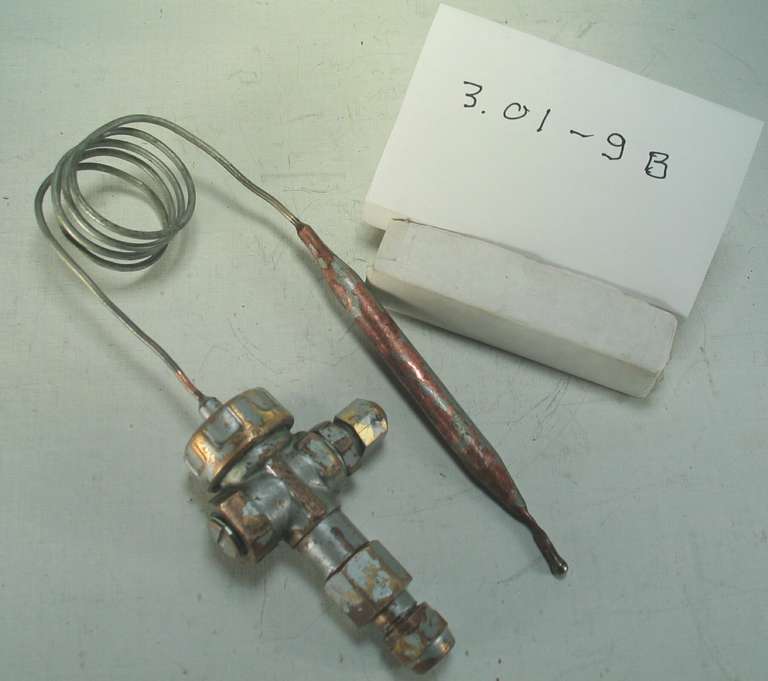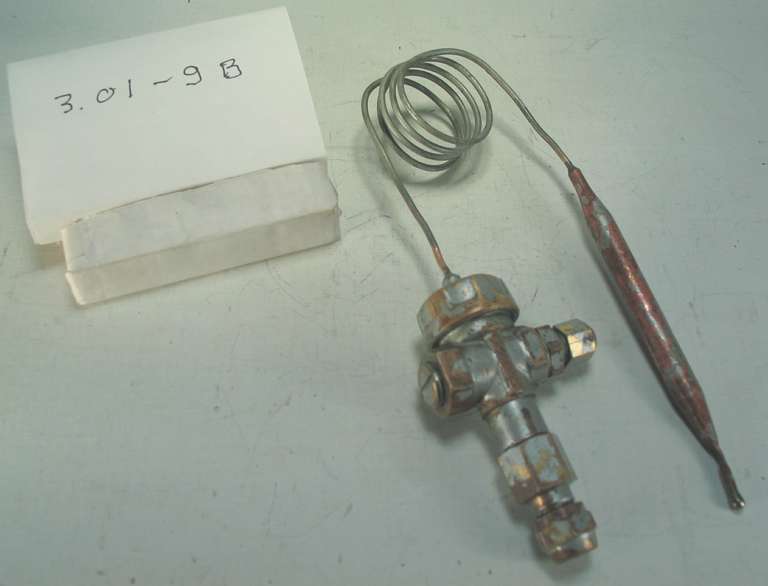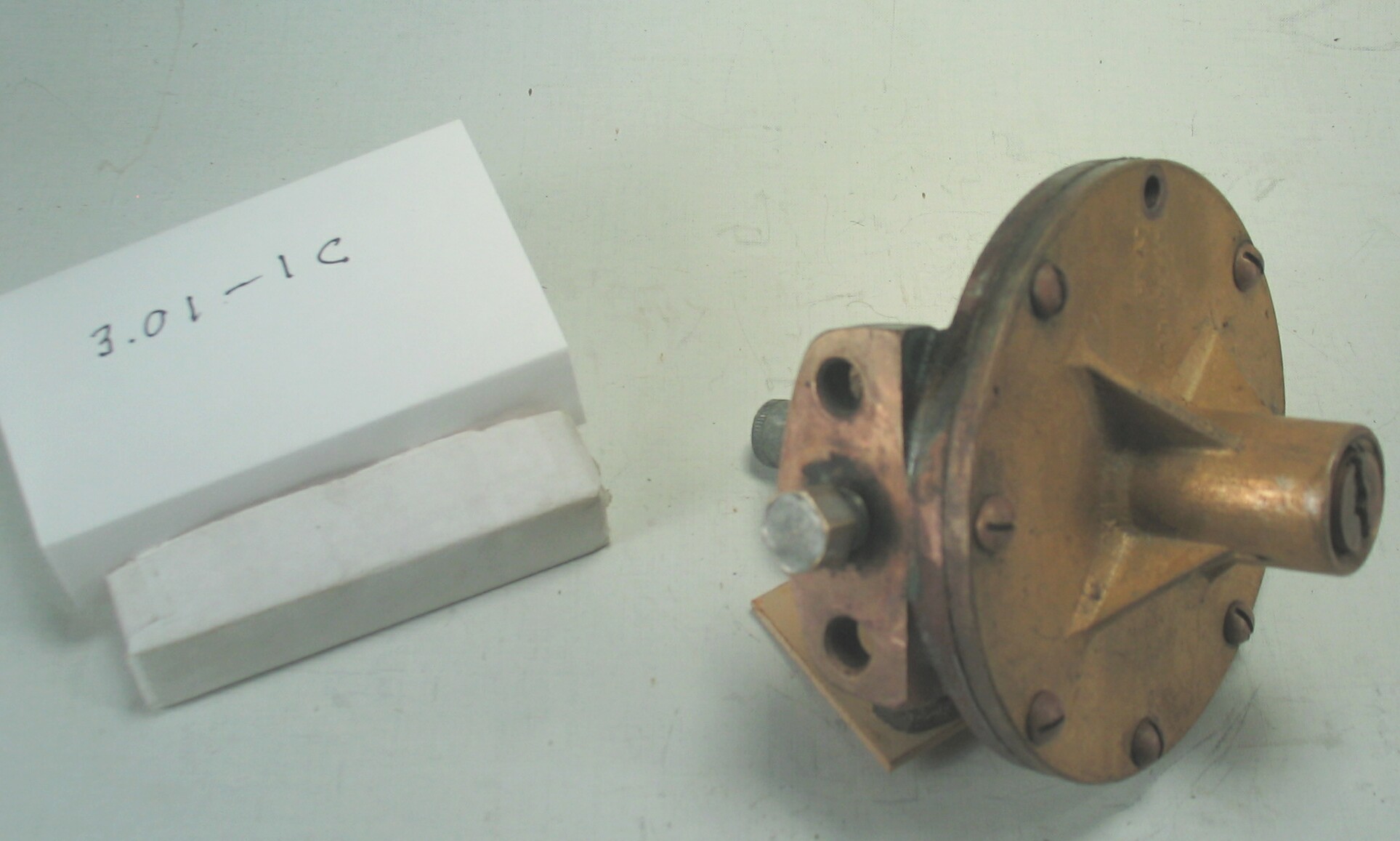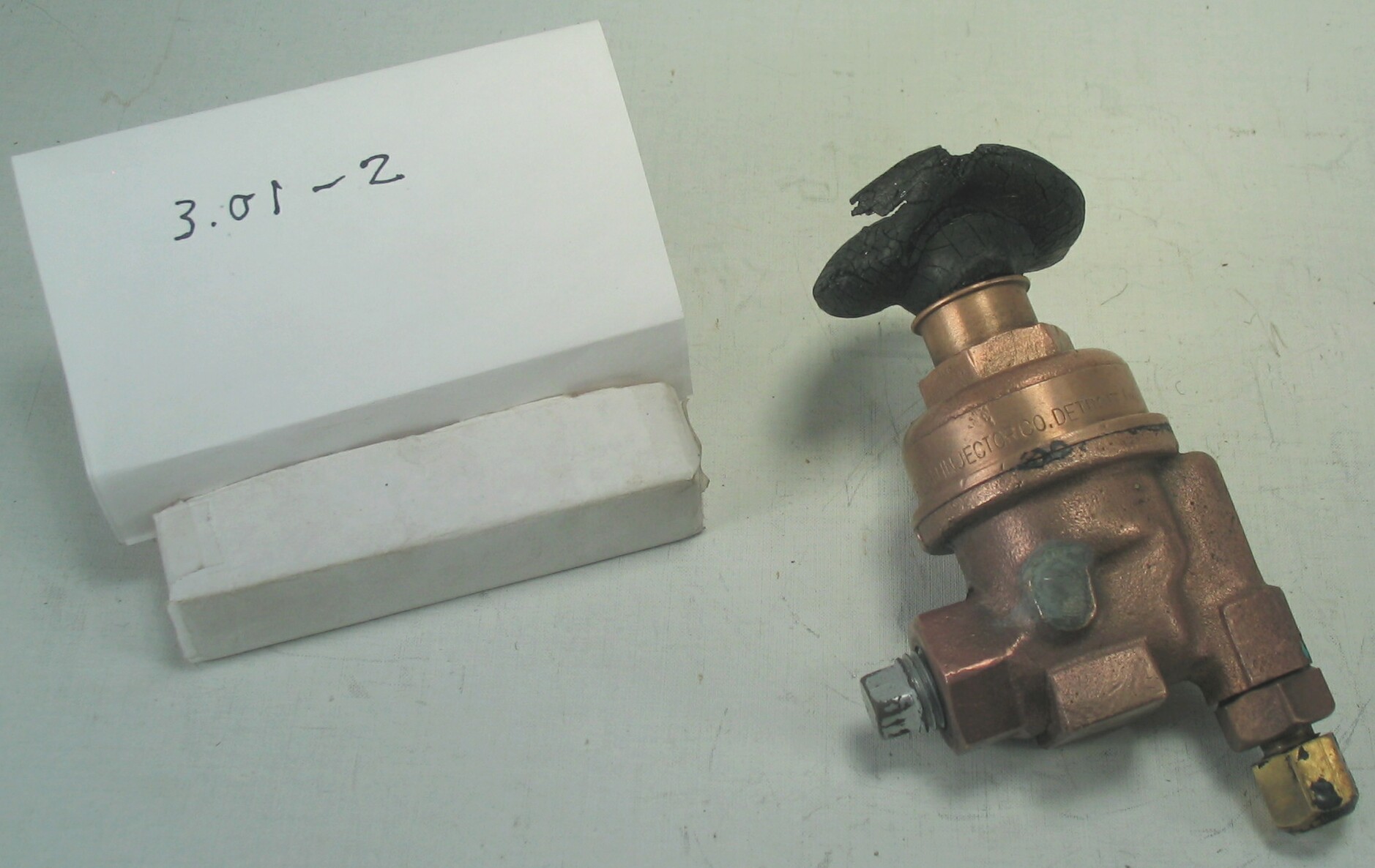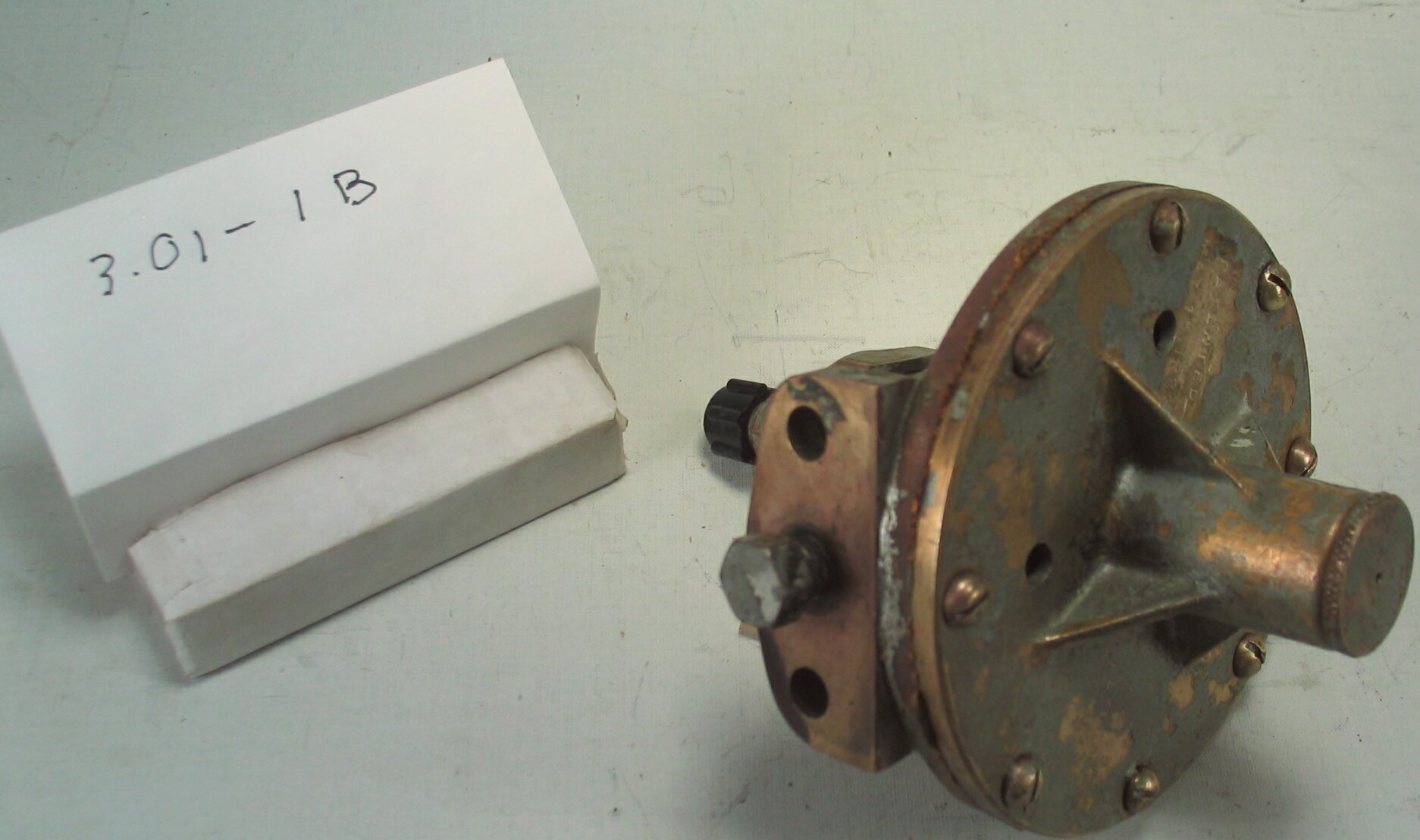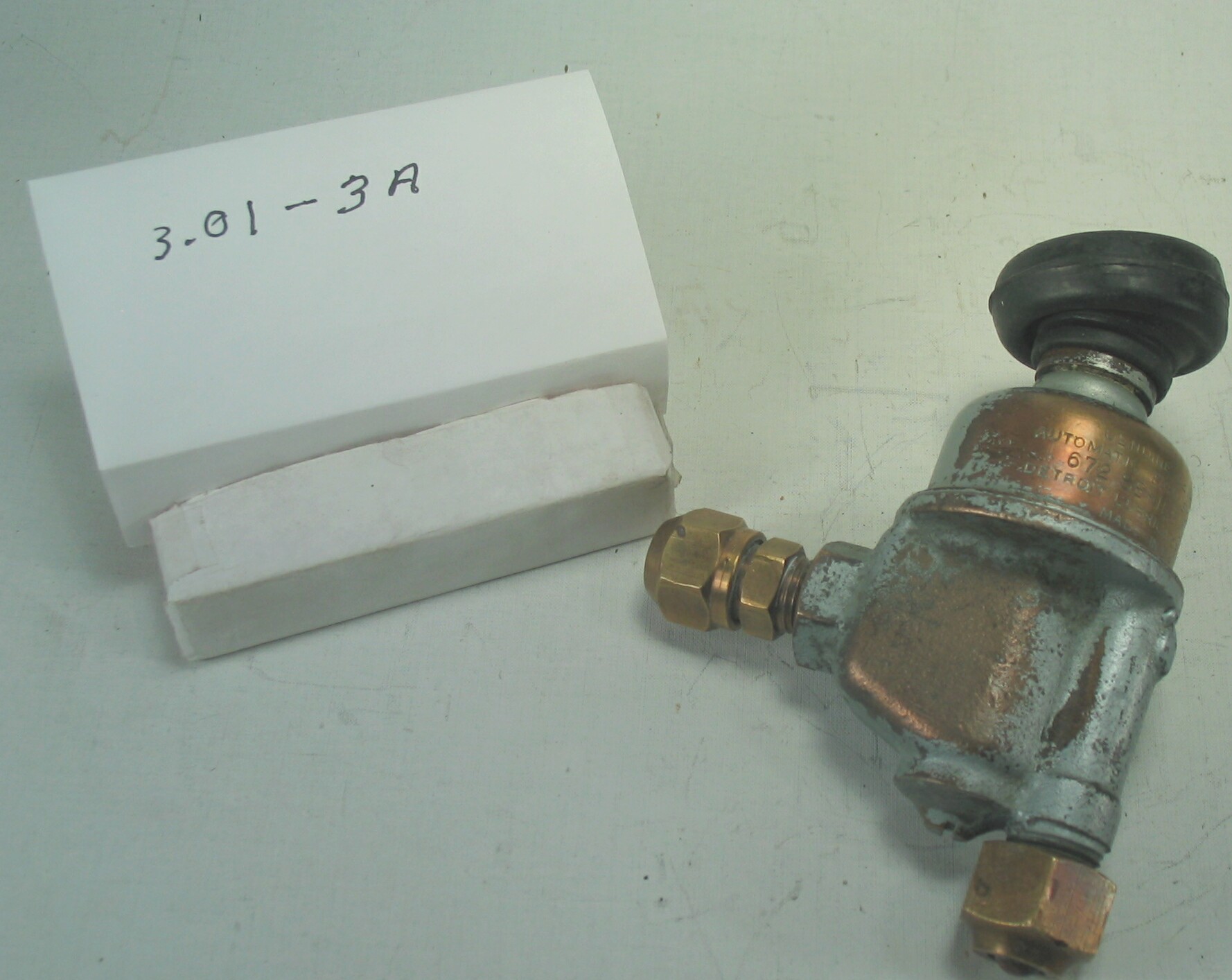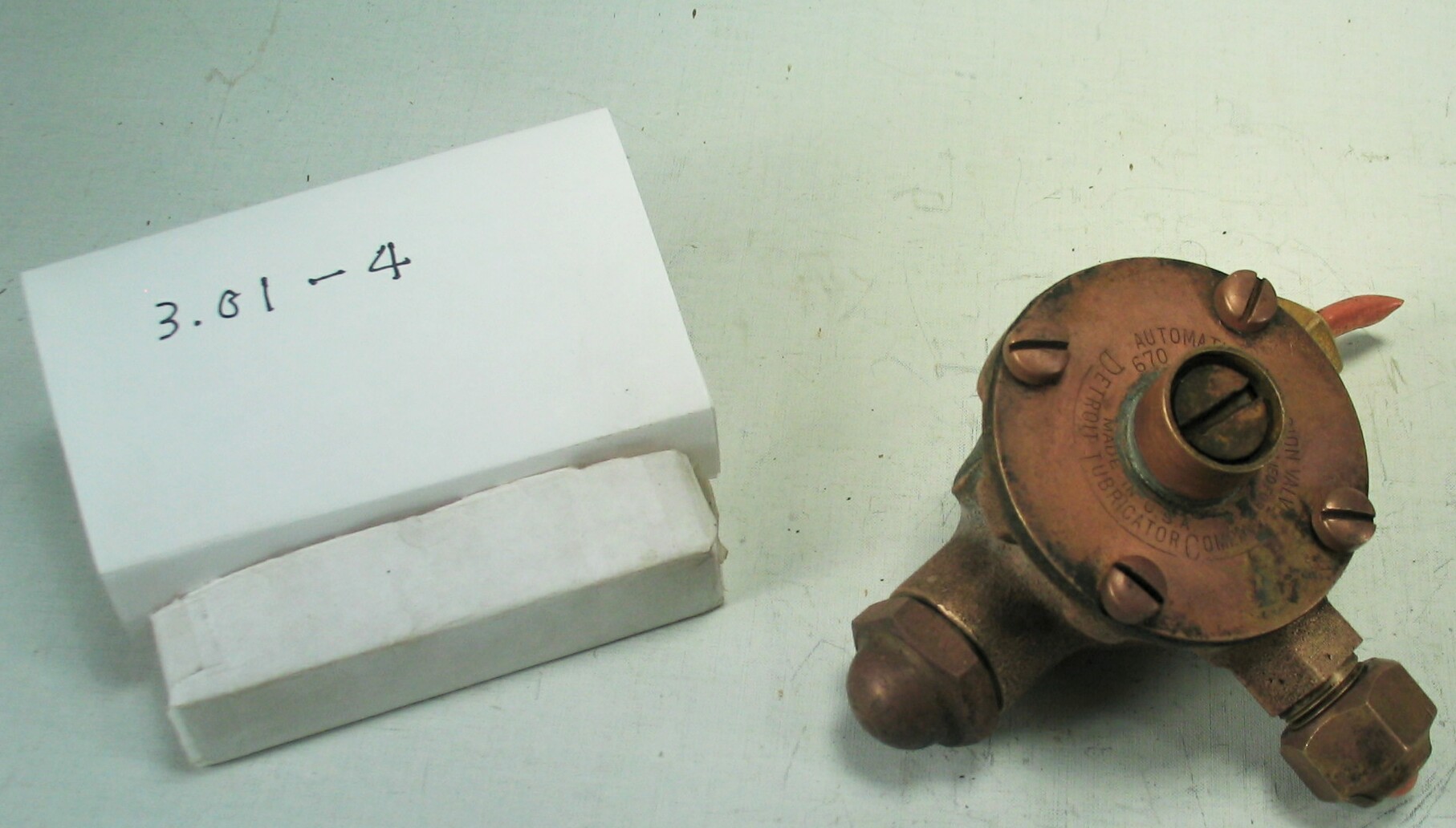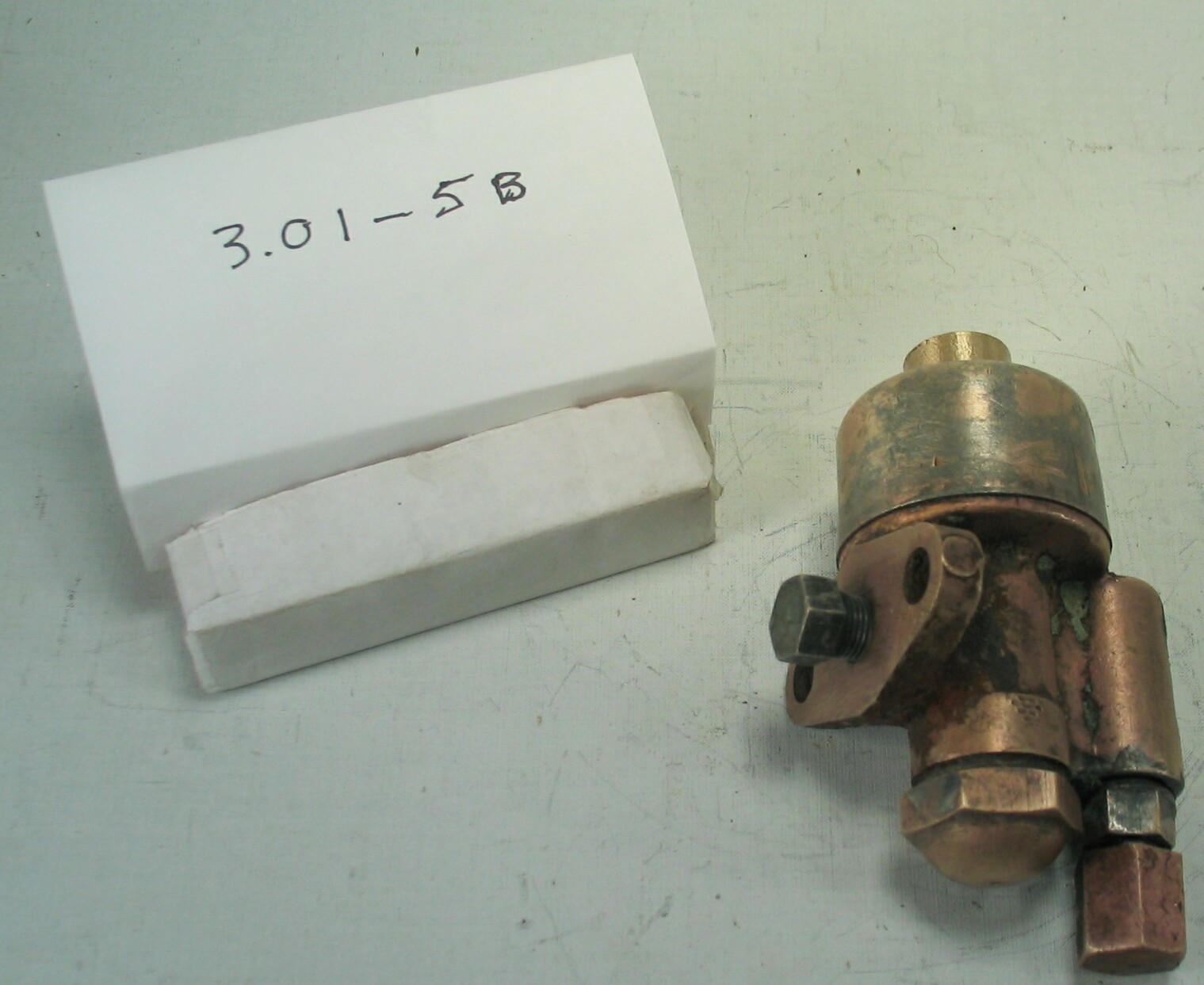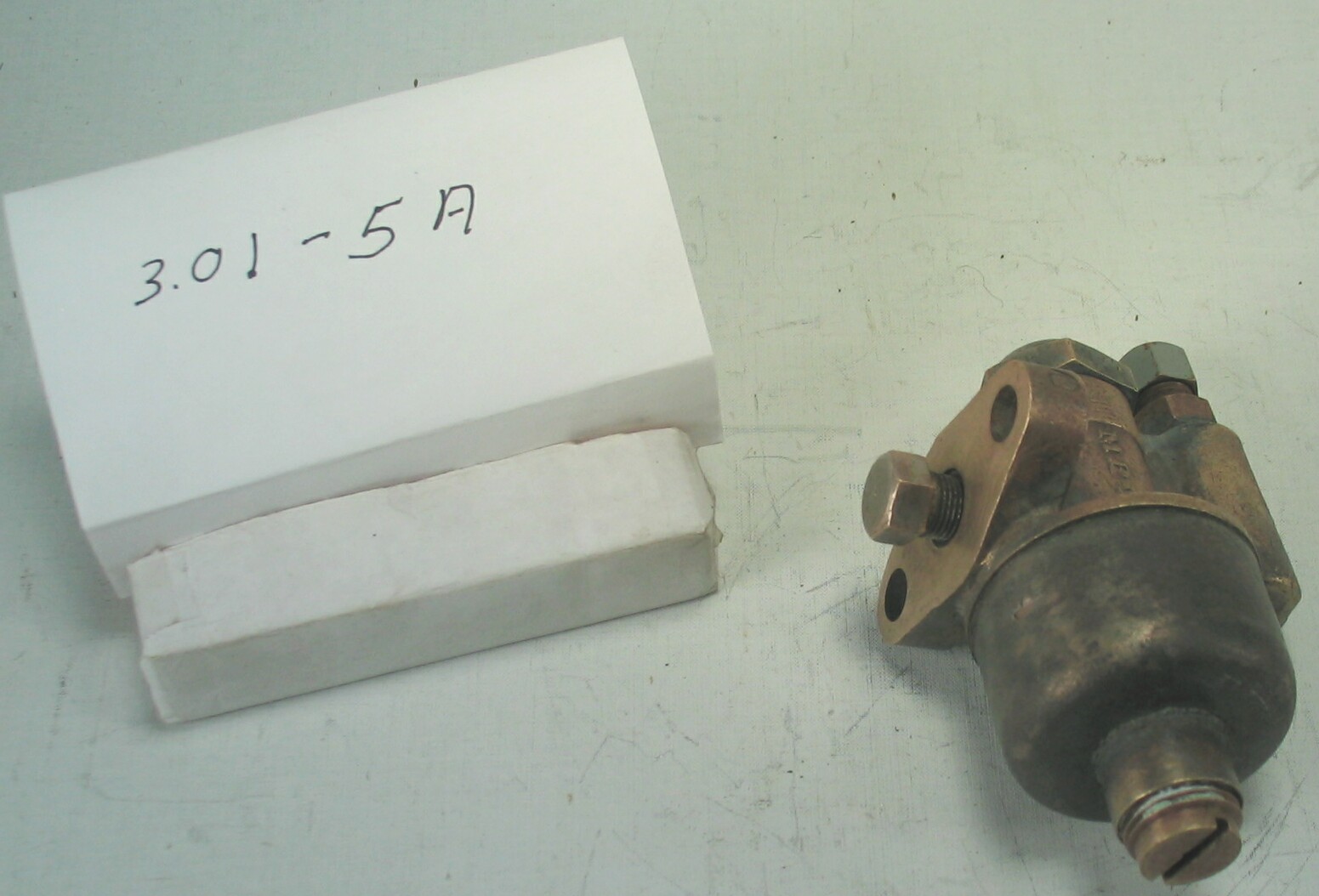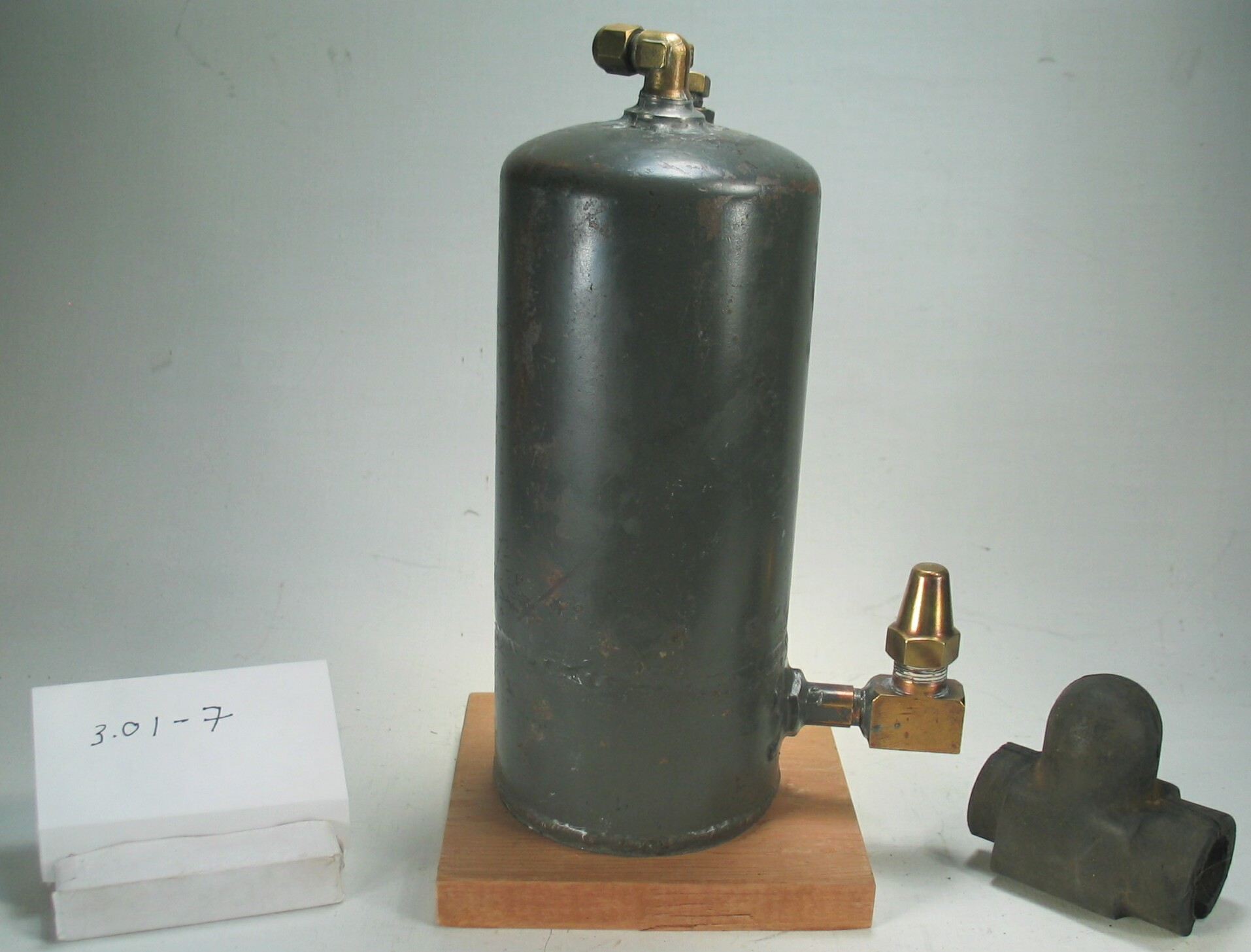3.01-9B: Kelvinator 1938 Thermostatic Expansion Valve
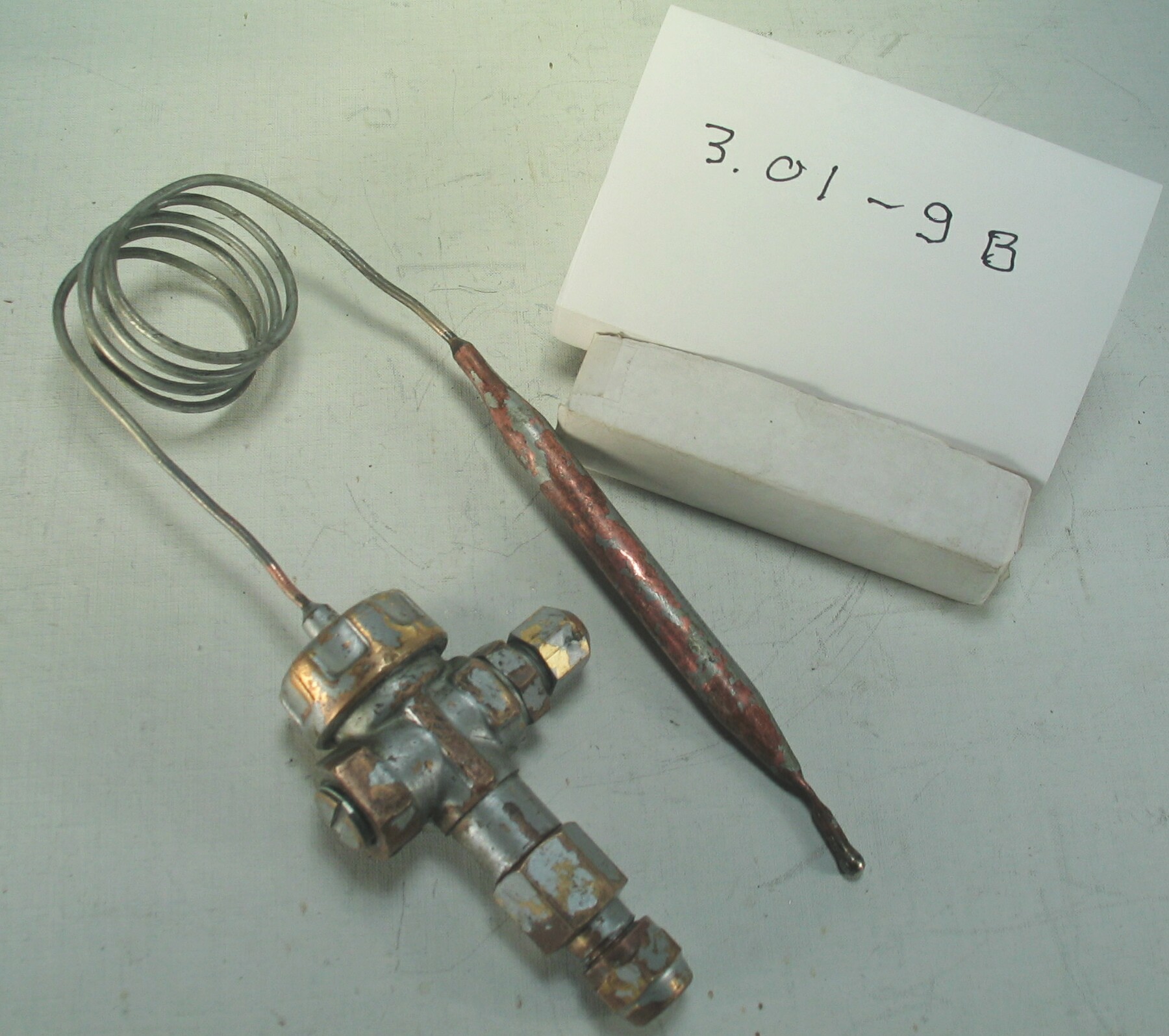
| HHCC Accession No. 2006.054 | HHCC Classification Code: 3.01-9B |
|---|
Description:
An amazingly compact, light weight [8oz.], new generation of brass body, adjustable thermostatic expansion valves, for household and small commercial equipment applications, with 30’ capillary tube and bulb, designed for a methyl chloride, Patented 1934, Model LM, Mayson Mfg. Co. Detroit. Circa 1938. [one of a matched set of two, see ID # 177, similar to ID #177 without Kelvinator markings]
Group:
3.01 Refrigerant Flow Controls - Household
Make:
Mason for Kelvinator
Manufacturer:
Mayson Mfg. Co. Detroit
Model:
4LM, C40
Serial No.:
Size:
4 x 1.5 x4 in h
Weight:
11 oz.
Circa:
1938
Rating:
Exhibit, education, and research quality, illustrating a new standard in design and performance in TX refrigerant metering devices achieved by a speciality, ‘high tech’, manufacturer by the mid 1930’s.
Patent Date/Number:
1964687 [1934]
Provenance:
From York County (York Region) Ontario, once a rich agricultural hinterlands, attracting early settlement in the last years of the 18th century. Located on the north slopes of the Oak Ridges Moraine, within 20 miles of Toronto, the County would also attract early ex-urban development, to be come a wealthy market place for the emerging household and consumer technologies of the early and mid 20th century.
This artifact was discovered in the 1950’s in the used stock of T. H. Oliver, Refrigeration and Electric Sales and Service, Aurora, Ontario, an early worker in the field of agricultural, industrial and consumer technology.
Type and Design:
Thermostatic expansion valve with miniature power element, 30’ extended capillary line and bulb
Construction:
Brass body, over painted in aluminium
Material:
Special Features:
Beautifully proportioned brass body with engraved markings
Accessories:
Capacities:
Performance Characteristics:
Operation:
Control and Regulation:
Targeted Market Segment:
Consumer Acceptance:
Merchandising:
Market Price:
Technological Significance:
The advances in the engineering, production and application of thermostatic expansion [TX] valve technology throughout the industry in the 1930’s were truly impressive, as the valve moved into the mainstream of refrigerant flow control applications, replacing much cruder metering devices, including float valves and automatic pressure setting valves. TX valve technology enabled much more efficient use of evaporator [cooling unit] surface and thus the use of smaller evaporators
Now designed for a new generation of fluorinated hydrocarbon refrigerants, these valves were engineering masterpieces of their times, compact, precisely calibrated, and reliable refrigerant flow control devices. Valves were ordered refrigerant specific.
An exquisitely engineered and crafted brass body valve, it is driven by a miniature brass bellows, with extended copper capillary line and 3/8’ sensing bulb ‘ an impressive example of precision, mass production and quality control methods of the period. Compact and reliable, with capacities up to 1/3 ton, Mayson’s Model L series TX valves would become a kind of ‘work horse’ for the repair and replacement field, to be shown in wholesalers’ and jobbers’ catalogues through into the 1960’s. see bibliographic note It was often used to up-date earlier equipment using an automatic expansion valve, in order to improve evaporator efficiency, and sometimes accompanying a conversion from methyl chloride to R12 refrigerant.
Industrial Significance:
This valve carries the surprisingly early patent date of 1934, marking Mayson as one of a small number of pioneers in the early development of TX valve technology for a new generation of refrigerants and refrigeration applications. The contrast between the sophistication of this valve and the offerings of Frigidaire, a brand label, is most marked, much smaller and more polished in appearance, see for example ID #179, and others that follow.
Socio-economic Significance:
The range of refrigeration equipment applications made possible with the introduction of this new generation of TX valves would be truly astonishing, enabling a surprising range of household and commercial equipment development through to the end of the 20th century and beyond. All this would come to change what Canadians ate, and their expectations of the fresh foods available at home in their own kitchens, as well as at the corner store.
Socio-cultural Significance:
Donor:
G. Leslie Oliver, The T. H. Oliver HVACR Collection
HHCC Storage Location:
Tracking:
Bibliographic References:
Marshall Refrigeration Co., undated, circa 1958, Toronto
Notes:
Related Reports:
See Exhibit catalogues for exhibits CMX02, CMX04, R11
